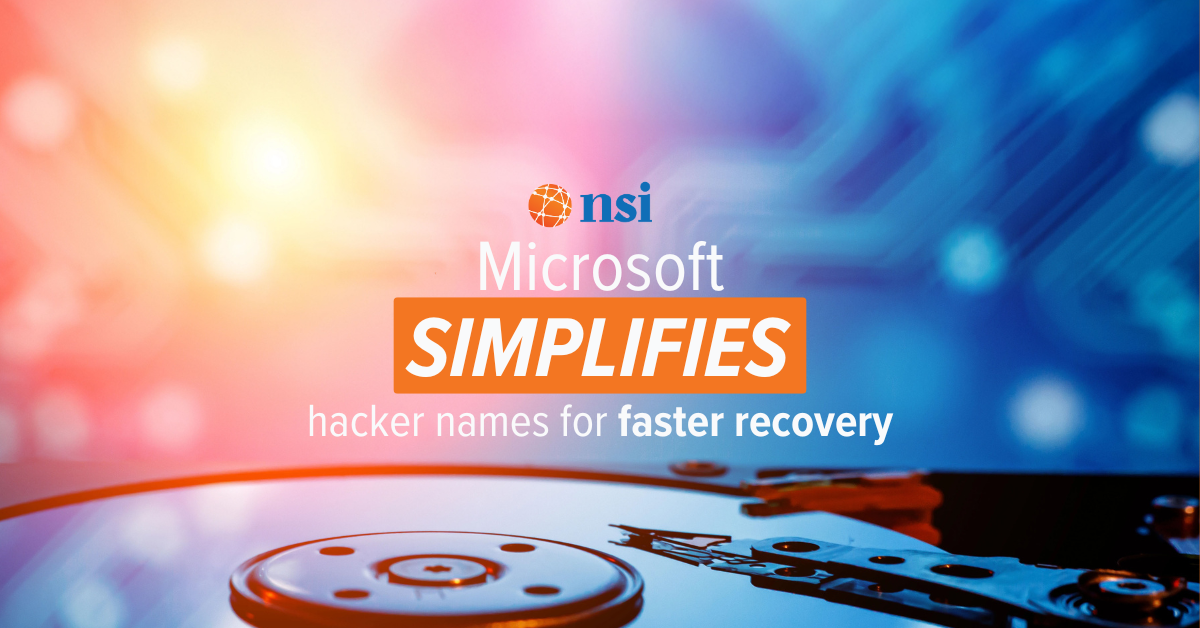Key Takeaways
- Today, hackers often go by multiple names across different cybersecurity firms, which can be confusing.
- Microsoft and CrowdStrike are building a unified naming framework to solve this.
- The system uses weather-based labels to categorize hacker groups by type and origin.
- For your business, this means faster detection, more transparent communication, and stronger protection.
- NSI ensures you benefit from these changes by aligning our security services with the latest threat intelligence.
Right now, one hacker group can be known by three or four completely different names, depending on which cybersecurity firm you’re reading. That confusion slows down response times and leaves businesses exposed.
To address this, Microsoft and CrowdStrike are introducing a unified naming system for cybercriminal groups. By creating a single standard that everyone can follow, they’re making it easier for companies like yours to identify who’s behind an attack—and respond more quickly.
At NSI, we know clarity saves time. In cybersecurity, every second counts.
Why This Matters for Your Business
When threat intelligence is scattered under different names, your IT team or provider may not immediately realize they’re tracking the same attacker. That delay can give hackers the advantage.
With a standardized system:
- Everyone speaks the same language. Your IT provider and industry experts will be aligned.
- Faster recognition of threats. You’ll know right away if suspicious activity matches a known hacking group.
- Stronger defenses. With clearer intel, NSI can help you act faster and protect your operations more effectively.
This isn’t just a cosmetic change—it’s a structural improvement in how the industry shares knowledge.
How the New Naming System Works
Microsoft’s framework groups attackers using weather-based terms tied to their origin:
- Typhoon → Chinese state-backed actors
- Blizzard → Russian state-backed actors
- Tempest / Storm / Tsunami → Ransomware gangs and spyware developers
This shared system means that whether Microsoft, CrowdStrike, or Google identifies a threat, you’ll know immediately if it’s the same group targeting you.
Conclusion
Cybersecurity already comes with enough challenges. Confusing hacker names shouldn’t be one of them. By adopting a unified system, Microsoft and CrowdStrike are helping businesses like yours gain clarity—and that clarity leads to faster, stronger defenses.
At NSI, we make sure these industry-wide improvements translate into real-world protection for your business.
Let’s talk about how we can keep your company safer in an evolving threat landscape. Contact NSI today.
FAQs
Why is hacker naming such a problem?
Different firms use different names for the same attackers, which can slow down detection and response times.
How will the new system help my business directly?
It ensures your IT team or provider can quickly connect incidents to the right threat group, minimizing confusion and reducing risk.
Is this mainly for large corporations?
No. Smaller businesses may benefit since they often rely on external security partners who need clear, consistent intel.
What role does NSI play?
NSI translates industry improvements—like Microsoft’s unified system—into practical defense strategies tailored to your business, so you don’t have to manage the complexity.
